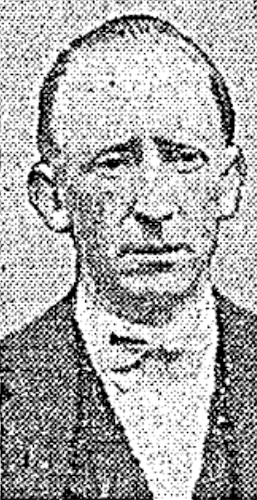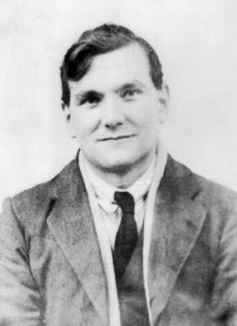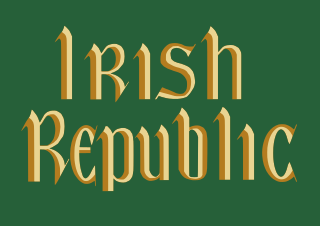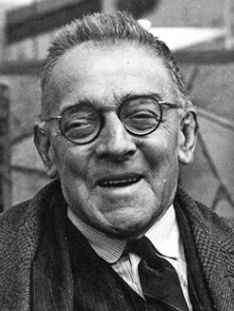
Cathal Brugha was an Irish republican politician who served as Minister for Defence from 1919 to 1922, Ceann Comhairle of Dáil Éireann in January 1919, the first president of Dáil Éireann from January 1919 to April 1919 and Chief of Staff of the Irish Republican Army from 1917 to 1919. He served as a Teachta Dála (TD) from 1918 to 1922.

The June 1927 Irish general election was to elect the 5th Dáil held on Thursday, 9 June following the dissolution of the 4th Dáil on 23 May 1927. It was the first election contested by Fianna Fáil, which had been formed a year earlier when Éamon de Valera, leader of the abstentionist Anti-Treaty Sinn Féin, failed to convince the party to take their seats if and when the Oath of Allegiance were abolished. Most of Sinn Féin's TDs, as well as the bulk of its support, shifted to Fianna Fáil. The impact of this shift saw Sinn Féin all but decimated; it was reduced to five seats. This was for many years the end of the party as a major force in the southern part of the island; it would not win more than 10 seats at an election until 2011, by which time it had undergone fundamental transformation. This election cemented Fianna Fáil as a major party; it and Cumann na nGaedheal/Fine Gael remained the two largest parties in Ireland until 2011.

Thomas Francis O'Higgins was an Irish Fine Gael politician and medical practitioner who served as Minister for Defence from 1948 to 1951, Minister for Industry and Commerce from March 1951 to June 1951 and Leader of the Opposition from January 1944 to June 1944. He served as a Teachta Dála (TD) from 1929 to 1932 and 1937 to 1953.

Maurice Twomey was an Irish republican and the longest serving chief of staff of the Irish Republican Army (IRA).
Michael Fitzpatrick was an Irish republican, Chief of Staff of the Irish Republican Army (IRA) and Clann na Poblachta politician.

The Irish Republican Army (IRA) is a name used by various paramilitary organisations in Ireland throughout the 20th and 21st centuries. Organisations by this name have been dedicated to anti-imperialism through Irish republicanism, the belief that all of Ireland should be an independent republic free from British rule.

The Easter Lily is a badge in the shape of a calla lily flower, worn during Easter by Irish republicans as a symbol of remembrance for Irish republican combatants who died during or were executed after the 1916 Easter Rising. Depending on the political affiliations of the bearer, it can also commemorate members of the pre-Treaty Irish Republican Army, both post-Treaty Irish Republican Armies, and either the Provisional IRA or the Official IRA. It may also be used to commemorate members of the Irish National Liberation Army (INLA).

The Irish Republican Army (IRA) of 1922–1969, an anti-Treaty sub-group of the original Irish Republican Army (1919–1922), fought against the British-backed Irish Free State in the Irish Civil War, and its successors up to 1969, when the IRA split again into the Provisional IRA and Official IRA. The original Irish Republican Army fought a guerrilla war against British rule in Ireland in the Irish War of Independence between 1919 and 1921. Following the signing of the Anglo-Irish Treaty on 6 December 1921, the IRA in the 26 counties that were to become the Irish Free State split between supporters and opponents of the Treaty. The anti-Treatyites, sometimes referred to by Free State forces as "Irregulars", continued to use the name "Irish Republican Army" (IRA) or in Irish Óglaigh na hÉireann, as did the organisation in Northern Ireland which originally supported the pro-Treaty side. Óglaigh na hÉireann was also adopted as the name of the pro-Treaty National Army, and remains the official legal title of the Irish Defence Forces.
James Anthony Lane is an Irish republican and socialist from Cork. He was a central figure in left-wing politics in Cork city during the 1960s to late 1980s and involved in many campaigns. He was also influential in republican circles nationally and a well known advocate of socialist republicanism of a Marxist-Leninist hue.

Cumann na mBan, abbreviated C na mB, is an Irish republican women's paramilitary organisation formed in Dublin on 2 April 1914, merging with and dissolving Inghinidhe na hÉireann, and in 1916, it became an auxiliary of the Irish Volunteers. Although it was otherwise an independent organisation, its executive was subordinate to that of the Irish Volunteers, and later, the Irish Republican Army.
Cumann na Poblachta was an Irish republican political party.

Peadar O'Donnell was one of the foremost radicals of 20th-century Ireland. O'Donnell became prominent as an Irish republican, socialist activist, politician and writer.

The Republican Congress was an Irish republican and Marxist-Leninist political organisation founded in 1934, when pro-communist republicans left the Anti-Treaty Irish Republican Army. The Congress was led by such anti-Treaty veterans as Peadar O'Donnell, Frank Ryan and George Gilmore. In their later phase they were involved with the Communist International and International Brigades paramilitary; the Connolly Column.
Irish republican legitimism denies the legitimacy of the political entities of the Republic of Ireland and Northern Ireland and posits that the pre-partition Irish Republic continues to exist. It is a more extreme form of Irish republicanism, which denotes rejection of all British rule in Ireland. The concept shapes aspects of, but is not synonymous with, abstentionism.
Comhairle na dTeachtaí was an Irish republican parliament established by opponents of the 1921 Anglo-Irish Treaty and the resulting Irish Free State, and viewed by republican legitimatists as a successor to the Second Dáil. Members were abstentionist from the Third Dáil established by the pro-Treaty faction. Just as the First Dáil established a parallel Irish Republic in opposition to the British Dublin Castle administration, so Comhairle na dTeachtaí attempted to establish a legitimatist government in opposition to the Provisional Government and Government of the Irish Free State established by the Third Dáil. This legitimatist government, called the Council of State, had Éamon de Valera as president. In 1926 de Valera resigned as president, left the Sinn Féin party and founded Fianna Fáil, which in 1927 entered the Fourth Dáil. Comhairle na dTeachtaí, never more than a symbolic body, was thereby rendered defunct.

Nora Connolly O'Brien was an Irish politician, activist and writer. She was a member of Seanad Éireann from 1957 to 1969.

Sheila Humphreys, also known as Sighle Humphreys, was an Irish political activist and member of Cumann na mBan.

Joe Clarke was an Irish republican politician.

Eithne Coyle was an Irish republican activist. She was a leading figure within Cumann na mBan and a member of the Gaelic League. However, her role in the period now known as 'revolutionary Ireland' (c1912-c1924) was more extensive than her membership of these two groups indicates. A letter from Peader O'Donnell dated 19 April 1945 in support of her application for a military service application noted she was targeted severely during the Irish Civil War by the Irish Free State forces who 'regarded her more as an IRA officer than as Cumann na mBan organiser, which indeed she was'. She would also become notorious for her involvement in two high-profile prison escapes in the 1920s.
Nora O’Keeffe (1885–1961) was a revolutionary and feminist from County Tipperary. She was a regional organiser of Cumann na mBan, a dispatch courier in the War of Independence and an anti-Treaty propagandist during the Irish Civil War who was interned in Cork and Kilmainham Gaol. She was the lifelong partner of Margaret Skinnider, a sniper wounded in the 1916 Rising.














